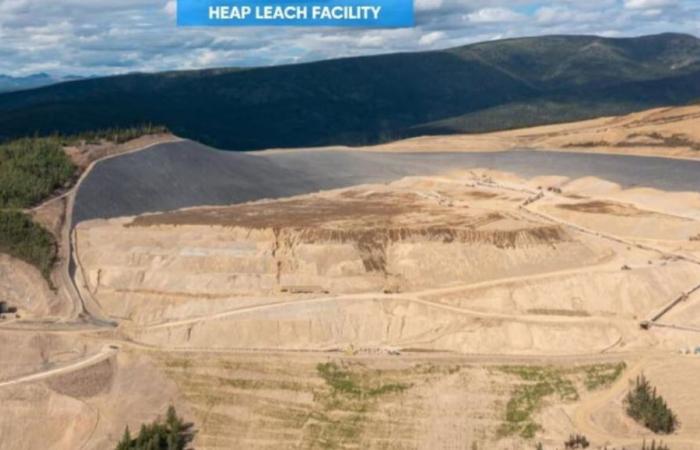A text by Camille Vernet
The Yukon government’s briefing provided few answers about the scope of a “significant” incident at the Eagle Mine on Monday when a platform failed, causing a pile of cyanide-contaminated ore to slide off the ground.
“We have no indication of the causes of this accident or its exact consequences,” said Kelly Constable, the director of mining resources.
On Thursday, Na-Cho Nyak Dün First Nation Chief Dawna Hope called the landslide “shocking” and said her First Nation was conducting its own water sampling.
We do not agree with the public statements made so far in the media that seem to minimize the seriousness of what happened and the long-term consequences, she said.
Water contamination: a major concern
Chief of the Na-Cho Nyak Dün First Nation is concerned that contaminants are leaching into rivers through groundwater.
For its part, the Yukon government did not seem concerned about the contamination of the water in the community of Mayo because of its geographical location.
The likelihood that Mayo’s drinking water will be compromised is extremely low, said Benton Foster, director of community health programs.
However, he added that the government had no information to characterize the nature or quantity of cyanide because the results of analysis of water samples sent to British Columbia would take several days.
High levels of cyanide in water could cause headaches and nausea, said acting chief medical officer Shobit Maruti.
Mining company Victoria Gold, which has ceased operations, did not provide further details on the environmental impact but said it had to lay off some staff.
Salmon at risk
At the end of the briefing, Cord Hamilton, a consulting engineer, took the floor to ask why the government isn’t looking for dead fish, an indicator of water contamination. “We want to know if you’re inspecting these organisms that are directly affected if cyanide is released.”
The Yukon Salmon Sub-Committee (YSSC) says the mine drains into the McQuesten River, which is an important spawning river for chinook salmon.
Anything that affects water quality, such as the Eagle Mine landslide, is a concern for the Yukon River ecosystem and the communities that depend on salmon, YSSC president Dennis Zimmermann said in a statement.
A public inquiry requested
White River First Nation Chief Bessie Chasse also spoke out Thursday and called for a public inquiry “into the reasons for this disaster.”
Too often, with mines like Faro, Mount Nansen, Minto and Yukon Zinc, we have seen companies complain about slow regulatory processes and then leave behind huge environmental problems that Yukoners and all taxpayers have to live with, said Bessie Chasse in a statement.
Government representatives declined to comment on a possible public inquiry. There were no elected officials, such as the Minister of Energy, Mines and Resources, present at the information session.
Last year, Victoria Gold was also fined $95,000 for mining licence violations. The case stems from a 2021 incident when 17,000 litres of a cyanide solution leaked from a pipeline.
While the true gravity of what happened has yet to be revealed, community concerns about the environmental impact are very much present.
With information from Cali McTavish
Read also :






